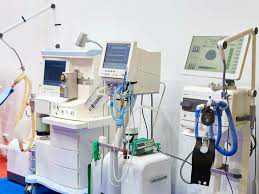At the point when you hear the news that somebody you love needs a ventilator, it's ordinary in the event that you need to know however much as could reasonably be expected about what it will mean for your adored one's life. You may have an overall thought of what a clinical ventilator is. It's a machine intended to give help to a patient who can't relax. In this article, we will study ventilators, from how it works and what's in store while on a ventilator.
What is a ventilator?
A ventilator is a machine that supports relaxing. It's additionally called a breathing machine or respirator. These machines are predominantly utilized in medical clinics. Ventilators will get oxygen into the lungs, eliminate carbon dioxide from the body, assist patient with breathing simpler, and relax for individuals who have lost all capacity to inhale all alone. A ventilator is frequently utilized for brief periods, for example, during medical procedure when you're under broad sedation or during therapy for a genuine lung infection or other condition that influences typical relaxing. A few group may experience the ill effects of a condition where they need to utilize ventilators for an extensive stretch or in any event, for the remainder of their lives.
How does a ventilator function?
A ventilator utilizes strain to blow air into the lungs. This pressing factor is known as sure pressing factor. A patient generally breathes out the air all alone, yet here and there the ventilator does it for them as well. The measure of oxygen the patient gets can be controlled through a screen associated with the ventilator. In the event that the patient's condition is especially delicate, the screen will be set up to send a caution to the guardian, demonstrating an expansion in pneumatic force.
Check out 👆
The machine works by carrying oxygen to the lungs and removing carbon dioxide from the lungs. This permits a patient who experiences difficulty breathing to get the legitimate measure of oxygen. It additionally assists the patient's body with mending, since it takes out the additional energy of worked relaxing.
A ventilator blows air into the aviation route through a breathing cylinder. One finish of the cylinder is embedded into patient's windpipe and the opposite end is connected to the ventilator. The breathing cylinder fills in as an aviation route by letting air and oxygen from the ventilator streams into the lungs. Contingent upon the patient's ailment, they might have the option to utilize a respiratory veil rather than the breathing cylinders.
What's in store while on a ventilator?
What's in store relies upon the seriousness of the patient's disease. For instance, a few group can continue customary exercises, like perusing or staring at the TV, while others should be controlled to keep them from pulling out their respiratory cylinders.
Patients or guardians likewise need to figure out how to give suctioning to keep bodily fluid from hindering the cylinders.
Ventilators regularly don't cause torment. The breathing cylinder in understanding's aviation route may cause some distress. Quite possibly the most disappointing things about being on a ventilator is that the patient can't talk and eat. Rather than food, the medical services group may give supplements through a cylinder embedded into a vein. In the event that a patient is on a ventilator for a significant stretch, they will probably get food through a nasogastric, or taking care of cylinder.
A ventilator incredibly confines patient's action and restricts their development. They might have the option to sit up in bed or in a seat, however normally can't move around a lot.
A silver fixing with the present circumstance is that a ventilator doesn't make any torment the patient. Be that as it may, there is a change period where the patient may encounter some distress while they become acclimated to the gadget. When the patient's condition has improved, there is typically a "weaning off" period to get the individual used to breathing all alone preceding eliminating the ventilator.




.jpeg)



0 Comments